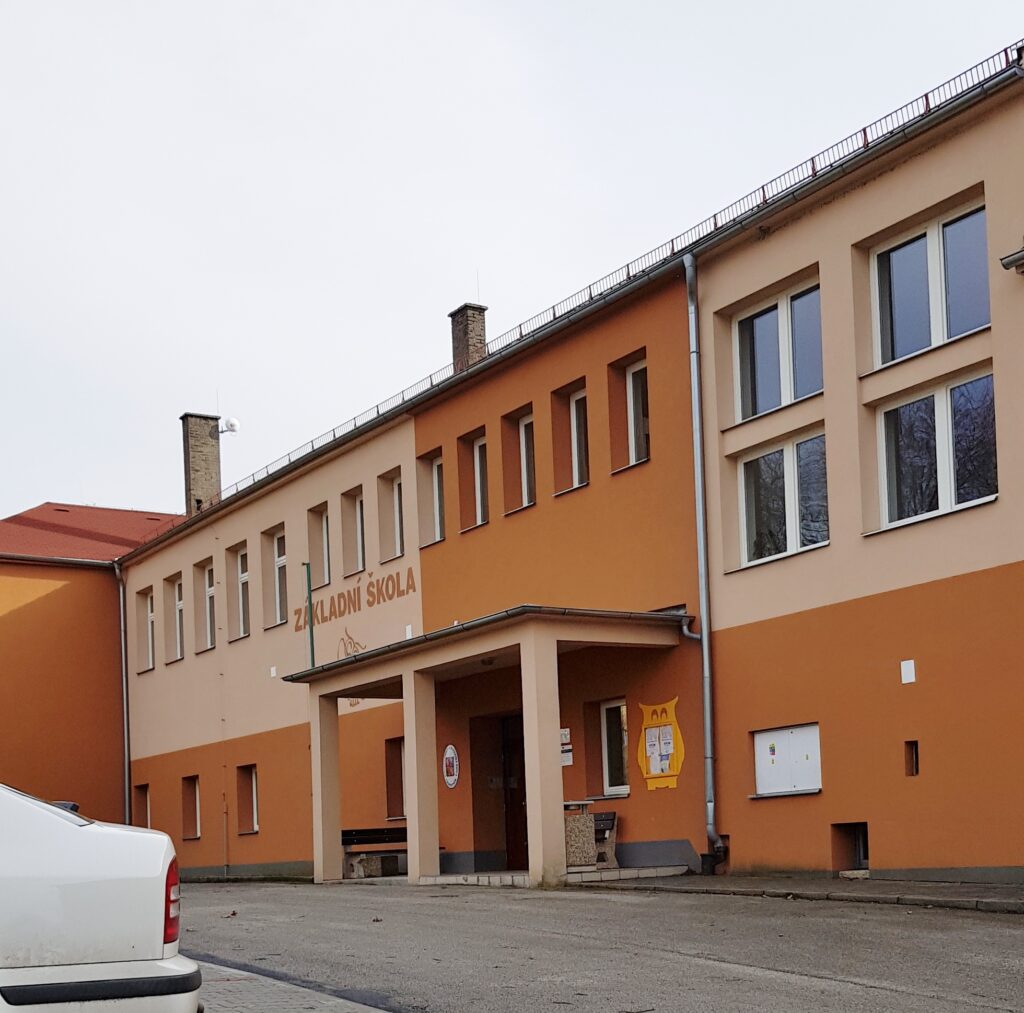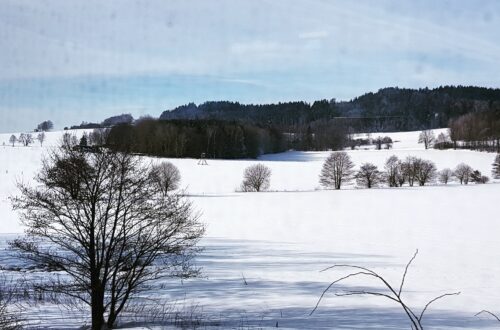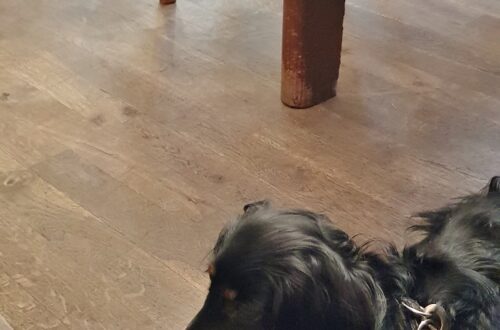Czech School Curiosities
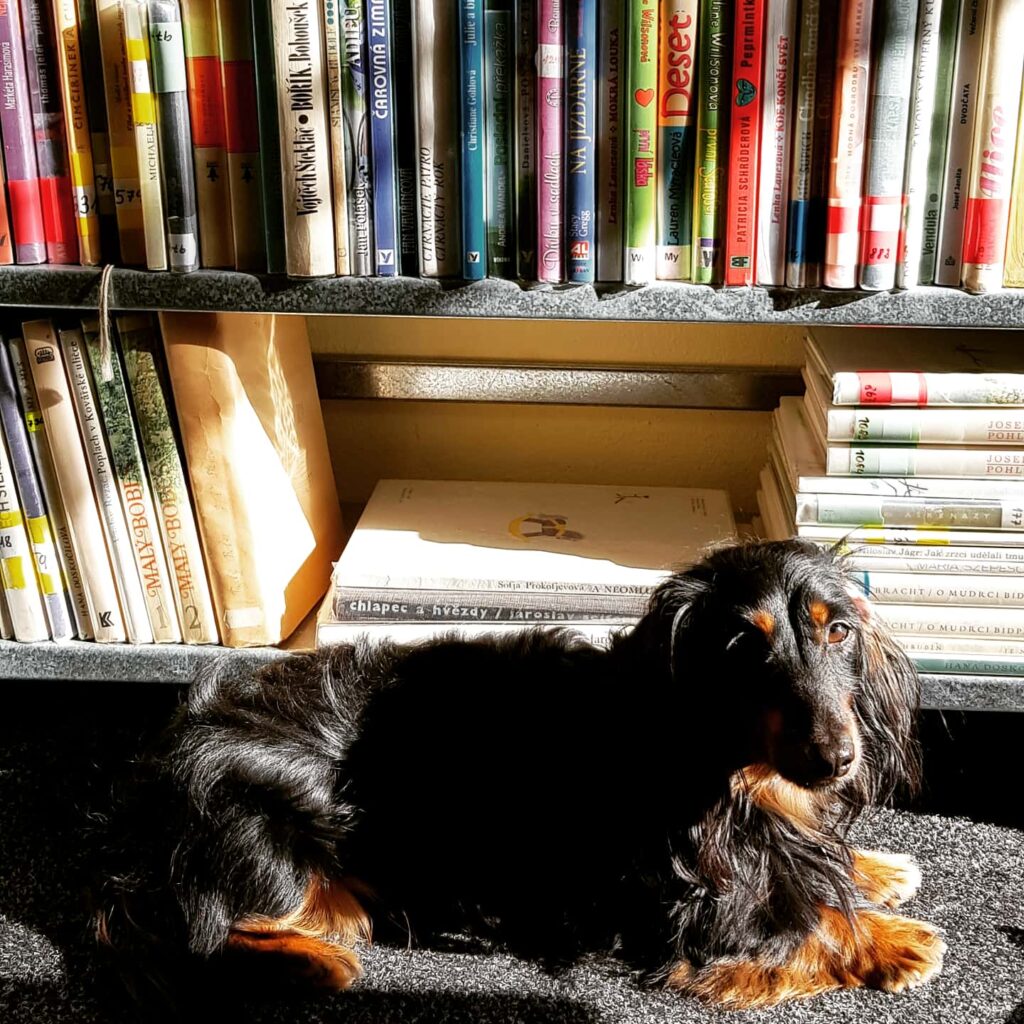
What a month! In the middle of February, it was supposed to have been our half-term break week, but several months ago we agreed to teach most of the week at a primary school waaaay out in the countryside, about an hour from where we live. I mean, we didn’t really have any plans and we have an ambitious travel year ahead, so why not?
The wind storm Sabine which ripped through Central Europe made it impossible to start teaching there on Monday as absolutely no trains or buses were leaving the city, but for most of this week we were up on the early train north. Although Alex isn’t a stranger to teaching at Czech primary schools, I teach mostly at a language school, in firms or at home so I didn’t much know what to expect at a Czech school and was really looking forward to my cultural experience there.
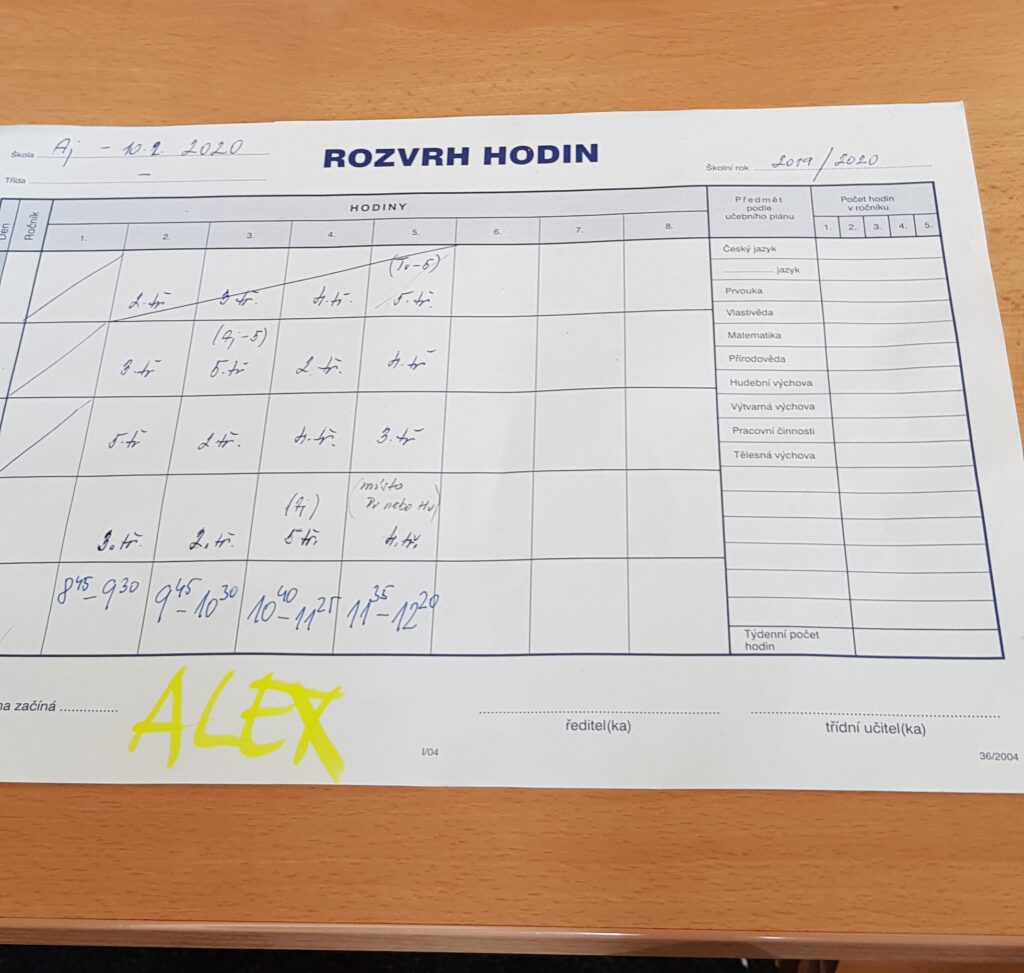
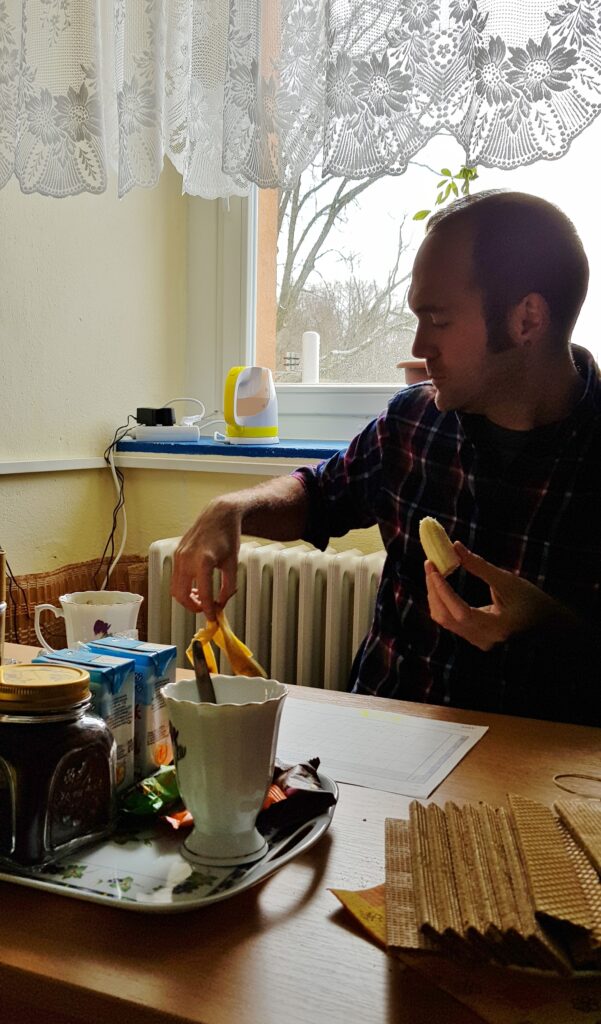
Immediately we were treated so kindly; even Ferdie went with us because we are mad-extra dog owners. (Ferdie hanging out in the library of a primary school is probably a “Czech School Curiosity” in itself) Even though the oldest class (9th graders) were a bit jaded and lethargic (what do you expect?), both the children and teachers were really lovely and happy to have us there. I would say most of them if not all had likely never interacted with a person who didn’t speak the Czech language before, so there may have been a small shock immediately, but with each passing day they had more time to process the situation and it got better and better. In hindsight, it was an incredibly enriching experience that I’m so glad to have had, both personally and professionally.
I have to admit that I’m not usually interested in writing posts that are like “here’s the differences between Czech and American things!” anymore, but in this case on Alex’s suggestion, I decided I did want to compile some things I was surprised about, that were totally new to me or frankly things I already have known but differ from the schools I grew up attending. And maybe, just maybe, you guys like reading about that kind of thing. (I have no idea! Tell me in the comments)
The Locker Room
Probably the first thing you noticed when you enter a Czech primary school is the huge, unisex open-floor-plan locker room (šatna) which is shared by the pupils of all ages (1st through 9th grade). When arriving to school, the pupils take off their winter outerwear and their shoes and leave it in a locker. Which brings me to….

No Shoes at School
I would be a bit disappointed with this one as shoes do make the outfit (harhar) but everyone (even teachers) wear some sort of house shoe, like Crocs or Birk-style sandals. I have been aware about the strict no-shoes policy in Czech homes and kindergartens, but it does indeed extend to primary schools as well as even secondary schools!
Jan. Amos. Komensky.
The dude is everywhere. His bust is found in hallways, in every room, in a framed portrait near the blackboard at the front of the room, his image even graces the cover of the standard issue red notebooks that each student uses for their school subjects. (One student had drawn glasses and a lightning-shaped scar on his head and had written “Harry Komensky” on it)
If you have familiarity with the Czech Republic and have been hanging here for awhile, you may have noticed Komenského Square or streets named for him around the country. Or the orange-colored two-hundred crown banknote. Well, it makes tons of sense that he’s all over schools as he was a 17th century philosopher, pedagogue and theologian who is often named as “The Father of Modern Education” and invented teaching methods that are still in use today. He looked down on old-fashioned memorization methods and instead came up with the method “learning through play” – exactly how we like to teach English to children these days! His birthday, March 28th, is known as “Teacher’s Day” in the Czech Republic, when pupils are to honor their teachers.

Standing at the Beginning of Class
Well, this one is pretty self-explanatory. All pupils are taught to stand at their seat at the beginning of each class period until the teacher tells them to be seated. I don’t quite remember this way back when in my elementary school days, but perhaps we did a form of this. I mean, I suppose reciting the Pledge of Allegiance would seem pretty strange to Europeans visiting American schools. I sort of like the standing, as it seemed like a nice sign of respect for the teacher.
In No Hurry
I like the attitude of the Czech school teachers. I have heard this from multiple people that the bell to start class might have rung, but the teachers sometimes are in no particular rush to be there right at that moment, even though the pupils are already in their classroom. Teachers deserve any little moment they can get, in my opinion.
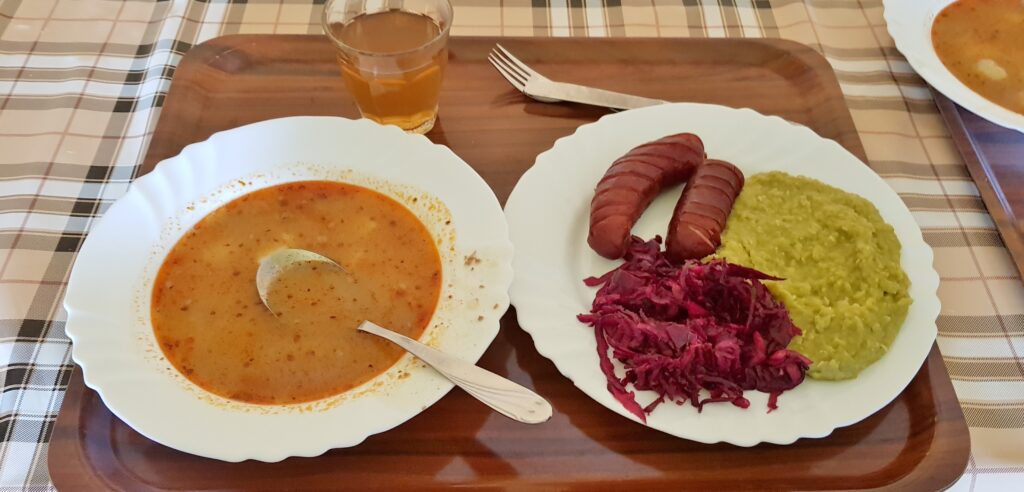
A Surprising Lunch
After having your lunch and of course, saying dobrou chut’ (bon appetit) to all of your table-mates, I continue to find it very interesting that the pupils usually go home right afterwards! There will be about five or so class periods, then by 12:30pm, class is finished, lunch is served, students leave – walk home, take the local or regional bus or get picked up. No class after lunch. I guess the promise of a good cheap hot lunch with friends is enough to keep the students at school for this time, but it seems out of the ordinary to me.
Speaking of lunch, I thought the above lunch was rather delicious! A sort of a bramboračka (potato) soup and then, what I thought was probably pork sausages with sauerkraut and mashed split peas, but was later informed that the sausages were made from fish (apparently, an African species), raised in area ponds! Of all the seafood I’ve eaten in my life, I’ve never had fish sausages. Local ones, at that. Absolutely fascinating – you would have never known it was fish!
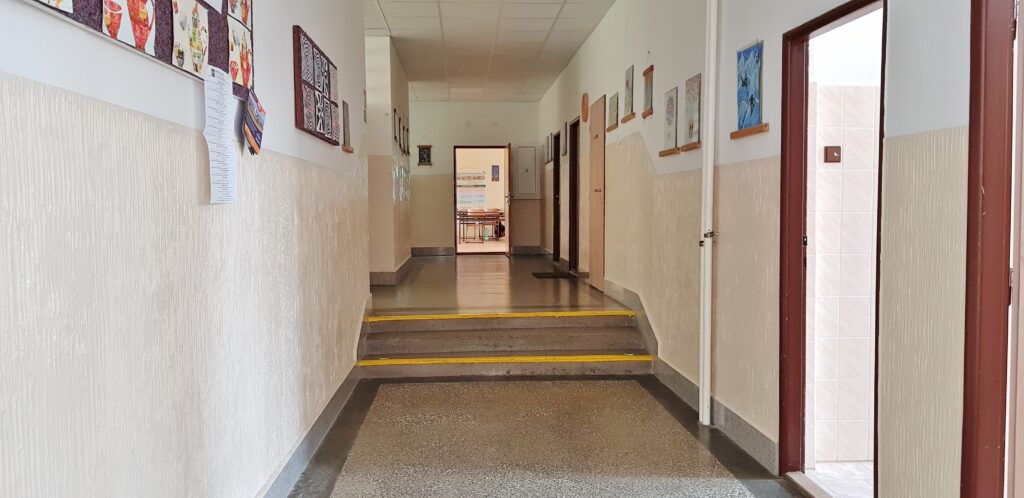
Other Notes
Also interesting is that I, so far, have not heard about a Czech primary school that has recess periods between classes like we have in American schools. There are ten to fifiteen minute breaks between each class period where the children are usually horsing around in or outside the classroom before the next period.
It should be noted, however, that the after school period at a Czech school is called družina – this is an after-school daycare provided by some teachers at the school (for a low price) which can include in or outdoor play, so only then do children play outside. But boy, do they play – I see the children at the primary school near my house playing after school and all kinds of weather – no amount of cold or snow will keep those kiddos down.
So, that is my account of curiosities about Czech primary schools. Did I forget anything? Were you surprised?
Čau, škola! It’s been a joy. See you next time!
